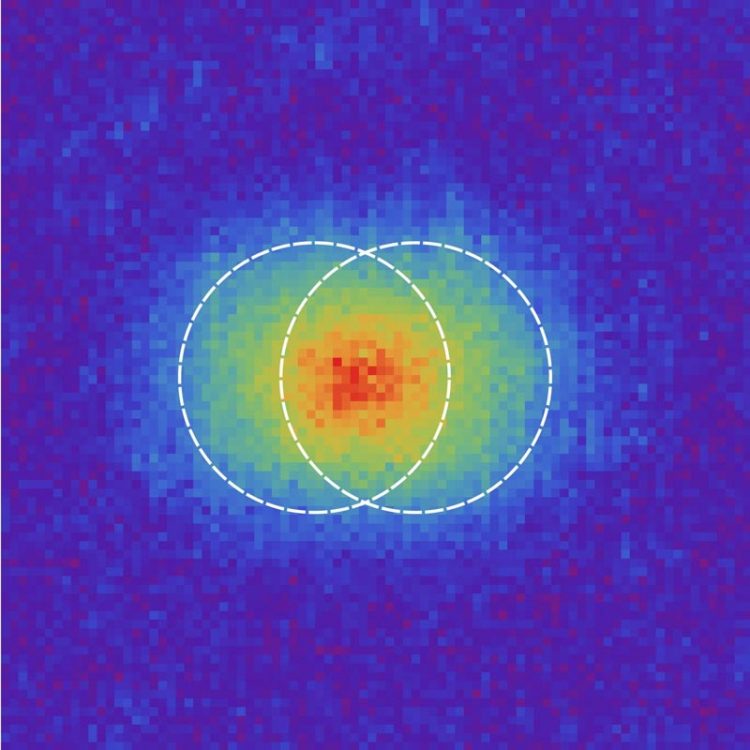A team of physicists dispels Rayleigh's curse

Optical resolution is the ability of an imaging system to distinguish between closely spaced objects. In the picture, we show two points separated by the Rayleigh's limit, as observed in the experiment. Credit: Martin Paúr - Palacký University
An ideal optical system would resolve a point perfectly as a point. However, due to the wave nature of light, diffraction occurs, caused by the limiting edges of the system's apertures. The result is that the image of a point is a blur. This limits the resolution of any imaging system, including microscopes, telescopes, and cameras. The quantitative formulation of this phenomenon is the time-honored Rayleigh's limit.
Rayleigh's curse limits the minimum distance that can be distinguished with visible light: on the order of 0.1 micrometer (a bacterium, for example, has a size of 2 micrometers), “which is a great limitation to our ability to see finer details”, says Luis Sánchez Soto, Professor at the Faculty of Physics at Complutense University of Madrid (UCM).
In cooperation with scientists from Palacký University in Olomouc (Czech Republic), the physicist has managed to break this limit, reaching resolutions up to 17 times lower than those purported by Lord Rayleigh.
“Textbook Optics should be reconsidered and Rayleigh's limit shall be placed in a broader context”, says Sánchez Soto, who is also a researcher at the Max-Planck Institute for the Science of Light in Erlangen (Germany).
The research, published in Optica, is the culmination of a thrilling race between four teams of scientists around the world. Everyone wanted to prove the violation of this limit, but the group led by the Spanish was the first to achieve it.
Improvements in imaging systems
The experiment shows that Rayleigh's curse is not inherent, but a consequence of not having chosen a good detection strategy. “So far, all our telescopes or microscopes directly observed intensity. Here we propose a scheme that optimizes the information obtainable and can exceed the Rayleigh limit”, says the physicist.
The applications of this scientific breakthrough are “indubitable”. Some companies have already shown interest in the discovery.
###
Reference: Martin Paúr, Bohumil Stoklasa, Zdenek Hradil, Luis L. Sánchez-Soto y Jaroslav Rehacek. “Achieving the ultimate optical resolution”, Optica 3 (10), 1144-1147, 2016. DOI: 10.1364/OPTICA.3.001144.
Media Contact
All latest news from the category: Physics and Astronomy
This area deals with the fundamental laws and building blocks of nature and how they interact, the properties and the behavior of matter, and research into space and time and their structures.
innovations-report provides in-depth reports and articles on subjects such as astrophysics, laser technologies, nuclear, quantum, particle and solid-state physics, nanotechnologies, planetary research and findings (Mars, Venus) and developments related to the Hubble Telescope.
Newest articles

Superradiant atoms could push the boundaries of how precisely time can be measured
Superradiant atoms can help us measure time more precisely than ever. In a new study, researchers from the University of Copenhagen present a new method for measuring the time interval,…

Ion thermoelectric conversion devices for near room temperature
The electrode sheet of the thermoelectric device consists of ionic hydrogel, which is sandwiched between the electrodes to form, and the Prussian blue on the electrode undergoes a redox reaction…

Zap Energy achieves 37-million-degree temperatures in a compact device
New publication reports record electron temperatures for a small-scale, sheared-flow-stabilized Z-pinch fusion device. In the nine decades since humans first produced fusion reactions, only a few fusion technologies have demonstrated…





















